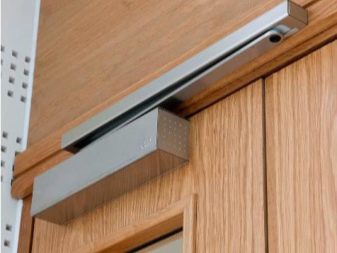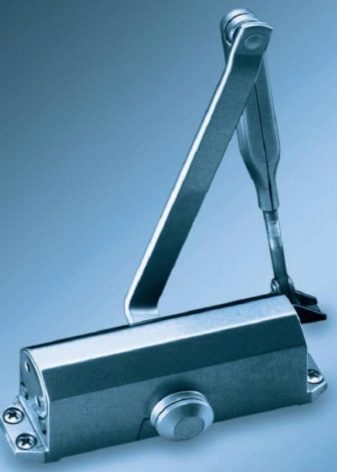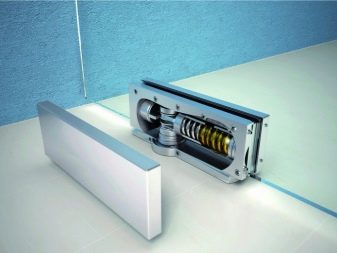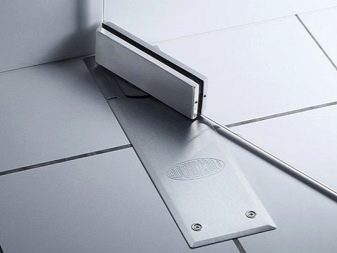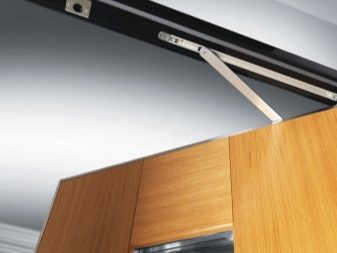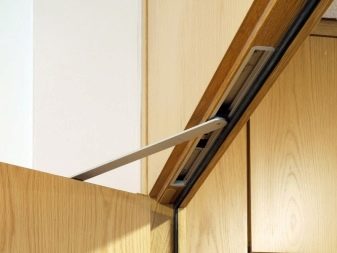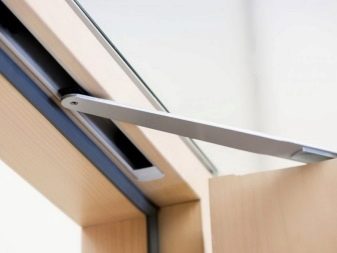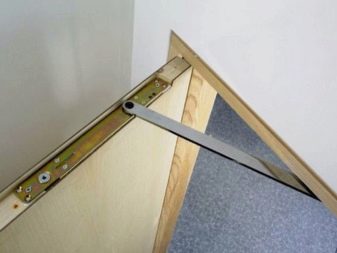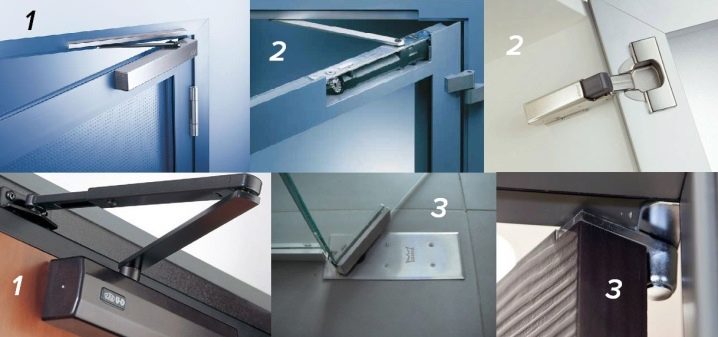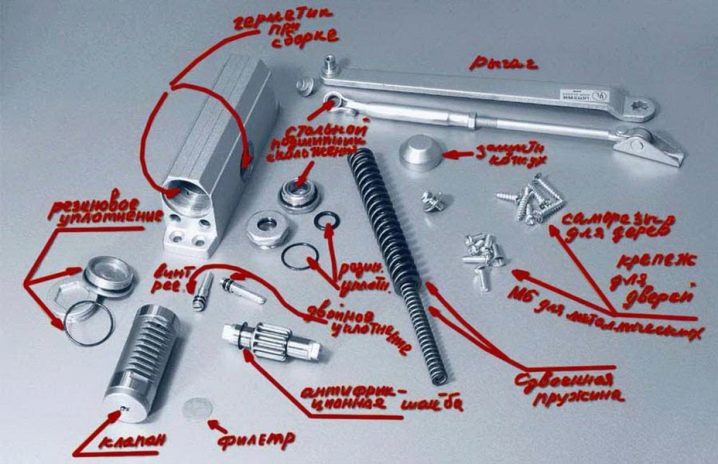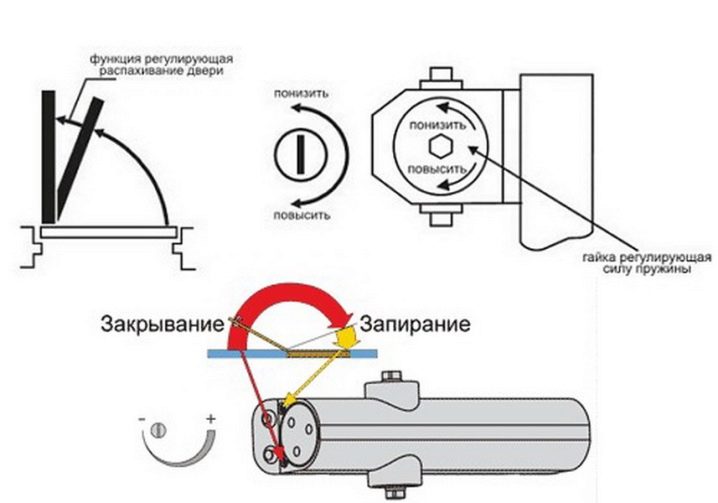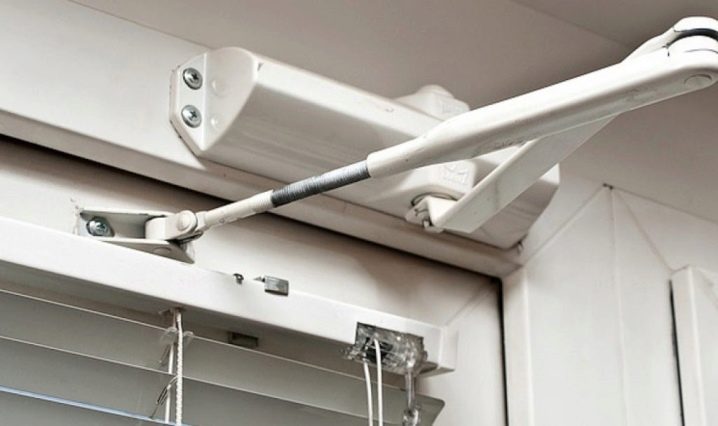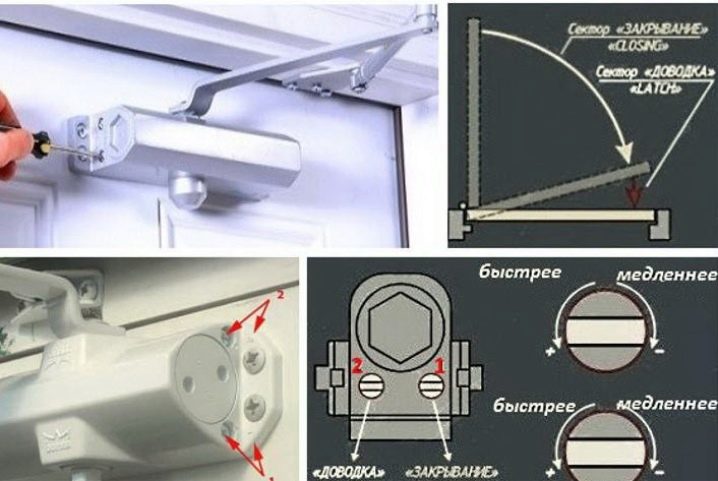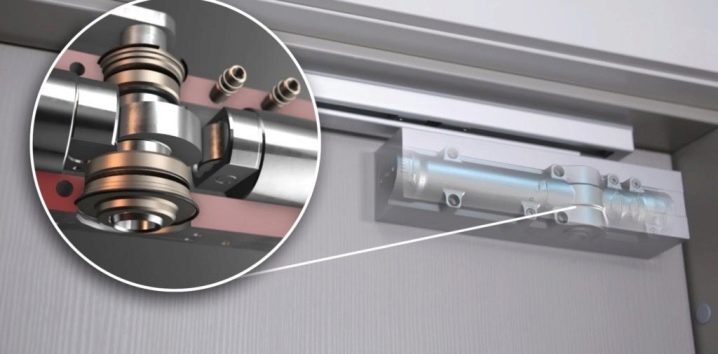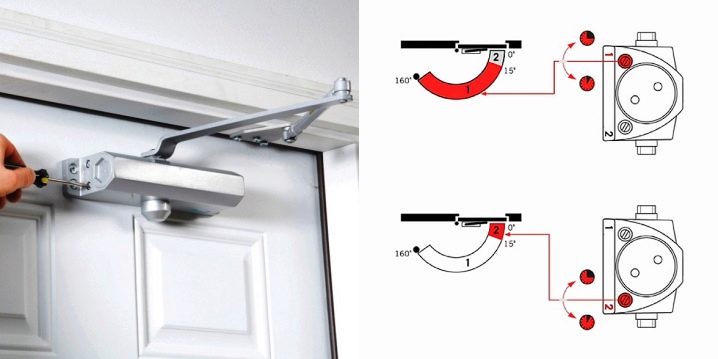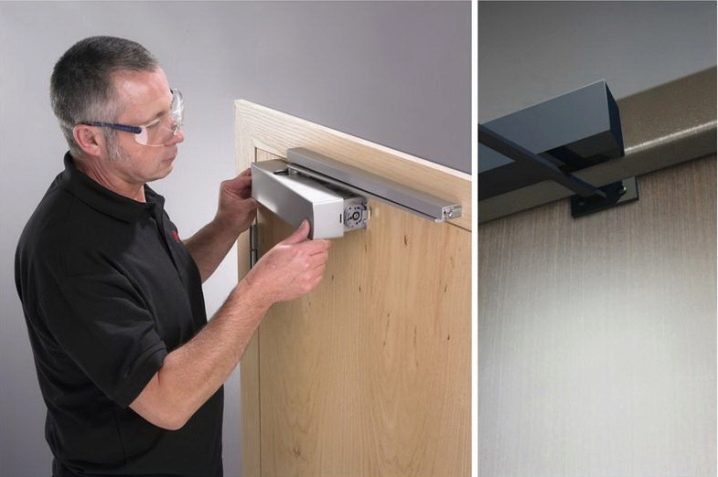Instructions for adjusting door closer

The closer is a device for returning the door to its original position in the automatic operation mode. This device silently and gently covers the opened flap. If necessary, he holds the door leaf in the open position. Many doors are equipped with modern practical device. However, like any technique, the closer needs maintenance, adjustment and troubleshooting.
Types of mechanisms and their device
To better understand the principle of the mechanism, it is necessary to analyze its basic varieties, so it will be easier to figure out how to properly debug a door closer.
For the most part, these two types of this device are practiced:
- cam slide - performs a soft slip, it is practiced for paintings with low weight;
- gear lever - the most common type of mechanism, the movement of the spring is realized by means of gears, it can be used even for massive door panels.
According to the method of mounting devices can be divided into three main types:
- Top location (overhead) - these are the most uncomplicated devices in use, their functions can be adjusted by means of several screws or valves placed on the housing panel. They are mounted at the top of the sash, which is extremely convenient for installation. For the entrance street doors, specialized oil-filled devices adapted for operation in hot or cold climates are manufactured.
- Outdoor. Floor-mounted systems are also relatively easy to set up.They have excellently shown themselves in banking institutions, offices, shopping and entertainment complexes, and where there is high demand for the appearance of the doors. These devices are integrated into the floor and are almost invisible to visitors. Mechanisms of regulators of a sliding look are applied, intended on a door weighing no more than 100 kilograms.
- Devices of the hidden type Self-adjusting is quite problematic, since they are retracted inside the door leaf or the floor, which complicates access to them. Devices are in demand where a thorough cosmetic finish and an ideal main facade are required.
According to the principle of the device are as follows:
- hydraulic;
- pneumatic;
- electric.
Fixture structure
In the structure of this device The following parts and mechanisms are included:
- cast aluminum housing;
- spring;
- piston;
- adjusting screws (valves);
- gears;
- needle bearing;
- rubber seals;
- fasteners.
Closer operation principle
The basic component of the design is a spring system, which, when opening the door, is squeezed and accumulates the energy required to close the door.The squeezing process is carried out by transferring the force of the traction device to the spring. Gears and slats move the piston, while the oil flows through the internal channels into the free part of the body. During the return stroke of the door, the spring straightens and provides a soft closing.
When is a procedure necessary?
Adjusting the door closer is a fairly simple matter. Customization can be done without any problems with your own hands. It is worth figuring out what situations may require adjustment of the parameters of this mechanism. The first thing that needs to be remembered is the duration of the uninterrupted operation of any mechanism directly based on the quality of its maintenance during the entire period of operation. As a result, 1–2 times a year, it is required to carry out an inspection of the door closer and eliminate minor malfunctions. This is especially important during the transitional period of seasons.
In summer and winter, climate conditions vary tremendously. Most of the closers are filled with oil, and as you know, every liquid changes its state when the ambient temperature changes.In particular, in winter, the oil takes on a thicker state and the course of the door leaf becomes slower. In summer, everything turns out the opposite, so you need to prepare a closer to the required level. Adjusting the fixture is also needed if you notice any malfunctions or you just do not like the settings that have been set. If the device starts to slow down or the door leaf closes too hard and quickly, irregularly, does not attract for a long time, you can try to correct all this. Things are a little more complicated when the fixture fails, as simple tuning will no longer be effective and repairs will be needed.
Instructions for setting up a door closer do it yourself
To adjust the device does not necessarily invite the wizard. It is enough to have a minimum set of tools and certain skills. The whole procedure will take a minimum amount of time and will provide an opportunity to achieve the desired result, adhering to the steps listed below.
- Before proceeding with the procedure itself, remember thatthat the main thing is not to overdo it with adjusting valves (screws). It is acceptable to make only 2 turns, then difficulties may appear. The oil in the tank under pressure can spill out and the hydraulic system of the door closer will eventually lose its operation.
- To adjust the speed of closing the door leaf, only one tendency needs to be learned - turning the valve in a clockwise direction, it will gradually decrease. If, however, perform the action in the opposite direction, the closure rate will increase.
- There is a solution to the problem associated with the fact that only one person can get through. Since there is a third valve, the adjustment of which can provide the door with a fixed position for a certain time. Consequently, even a group of people will be able to freely enter the premises.
- Such a problem as the lack of effort to completely close the door leaf is eliminated by adjusting the valves responsible for the closing speed.
The key problem in adjusting the door closer may be finding the perfect solution. The main task is to close the door to the end, so that no cracks remain. It is necessary to choose the perfect time, which the door leaf can stay in the open state. It is also required to make noiseless closing possible, hard shocks on the door frame are unacceptable. This may cause damage to the web. And the worst option could be the loss of performance mechanisms responsible for the proper operation.
How to adjust the closing force so that the door does not slam?
For self-tuning, you will need a flat-head screwdriver or an imba key. The door opens to the end, fixed special valve, placed at the end of the device. Full fixation is performed with the door leaf closed. By changing the degree of tightness of the valves, you can adjust the door to extremely comfortable closing. Valve number 1 is responsible for the force of closing the door.
If the door to the end is too fast to close at the beginning, the valve must be screwed on, and if it is slow and necessary to increase the speed, on the contrary, it must be unscrewed.Valve number 2 is responsible for the speed of complete closure of the door leaf (flap). Separate modifications possess the third valve which adjusts all efforts of functioning of the closer. With proper setup, the door leaf moves gently, without jerks. The result of proper installation and competent attitude closer will be a long service life.
Important! It is impossible to turn out adjusting valves absolutely. Otherwise, they will cease to carry out their functional purpose even after their return to their place.
How to loosen the opening?
Quite often, the door closer needs additional configuration. If the mechanism works tightly, and in the process of opening the door, it is necessary to make efforts — it is necessary to release the valve, the door will begin to function smoothly. The valve can be placed from the end or on the front side, it all depends on the modification of the device. The location of the valves can be determined by looking in the manual, where the manufacturer indicates the location of all the components and elements of the door closing mechanism.
Position open
At times, there is a need for an open door for a relatively long period of time.It is necessary to figure out how to adjust the fixture so that the doors do not close, but stay open. In many modifications of the closers for this there is an auxiliary option hold open. To make it adjust to this mode, you need to open the door about 90 degrees, and then tighten the specialized lock. After such simple actions, it will be possible to leave the door leaf open when it is opened to the adjusted degree. The device will activate a special lock and will hold the door in this position as needed. If you need to shut the door, you just need to pull it towards you, and it will come off the lock. If the door is not opened to the limit, it will move in the same way as always, without stopping.
Tips masters
It is worth adhering to the following recommendations, as they will help in adjusting the mechanism, and also organize work on your own:
- significant violations of the speed of the door leaf, avoiding the normal parameters is eliminated by turning one of the adjustable screws in the required direction, which will vary from the speed of opening (closing) the door;
- it is possible to increase (decrease) the speed of dohlop by turning the second valve in a clockwise direction or against it;
- if you turn the nut for adjustment in the required direction, you can make corrections due to spring tension;
- turning the adjustable nut will correct the valve responsible for the opening angle of the door; as a result, it will begin to open smoothly, it will be easier to swing open.
We can safely say that closers are practical and convenient devices. They are easy to install and operate. All modifications are equipped with specialized valves, through which you can adjust the strength and speed of opening or closing the door leaf. Closer options make it possible to hold the door in the open or closed state. But remember - it is necessary to buy these devices from distributors who have the right to sell in accordance with the all-Russian classifier of types of economic activity.
How to adjust the door closer with your own hands, see the next video.


